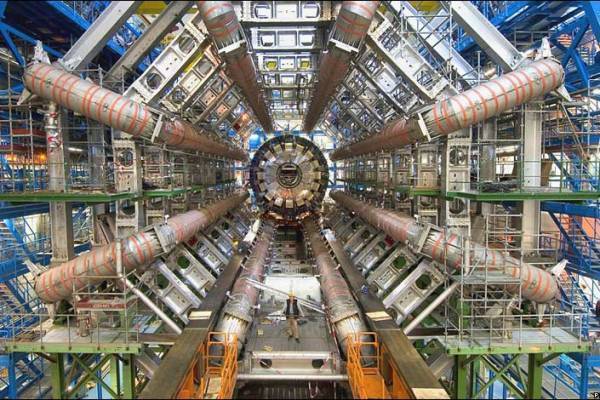Large Hadron Collider
The Large Hadron Collider, abbreviated as LHC, is an energy particle accelerator or collider instrument. It is the world’s biggest instrument used by scientists to study and examine the smallest identified particles; which are the primary building blocks of everything. The Large Hadron Collider is a worldwide project with UK playing the major part. This project will transform humans understanding about the microscopic world packed with atoms, the elementary laws of physics and the darkest secrets of the Universe.
Large Hadron Collider was designed for a purpose of having a mass collision among opposing particle beams of either protons at energy of 7 TeV per particle, or lead nuclei at energy of 574 TeV per nucleus. It was constructed by the European Organization for Nuclear Research (CERN) near Geneva, in Switzerland. It is financed by and constructed in alliance with over 10,000 scientists and engineers from over 100 countries, including hundreds of supporting universities and laboratories. The LHC instrument is encapsulated in a concrete tunnel which is 27 kilometers (17 mi) in perimeter and 175 meters (570 ft) below the ground.
Working
Large Hadron Collider primarily composes a 27 km circle of highly conductive magnets with many accelerating devices to enhance the energy of the particles during the circuit run.
The Large Hadron Collider works in the following manner: two rays of subatomic particles called ‘hadrons’ (hadrons could either be protons or lead ions) moves in opposed directions inside the circular accelerator, adding high kinetic energy with each circuit. The circular tubes are chilled to about 271°C – a temperature colder than outer space. Scientists will make use of the LHC experiment to simulate the environment post the Big Bang, by colliding the two subatomic rays straight-on at massive energy level. Specific detectors are used to analyze the generated particles during the experiment. Presently, there are four major detectors installed around the perimeter at various locations. The particle detectors are ATLAS (a general purpose detector used to explore for signs of new physics, including the origins of mass and extra dimensions), CMS (a general purpose detector used to track for the Higgs boson and explore evidences to the nature of dark matter), ALICE (used to examine a liquid type of matter called quark–gluon plasma that existed post the Big Bang) and LHCb (used to probe on what happened to the missing antimatter).
The foremost particle collisions at the LHC happened in November 2009 at 3.5 TeV. When adequate data has been collected, the particle collider will persist to run through 2010 at 5 TeV. It is also planned to run at 7 TeV, but not before late 2010.


Comments - No Responses to “Large Hadron Collider”
Sorry but comments are closed at this time.